Winter Landscape Stars
06 Dec 2021
Consider adding these cold-weather performers to your winter yard.
By Sara Bruskin
Winter treats us to dazzling displays of snow and ice, blanketing yards with downy white and coating branches with frost. These times feel magical, but the season doesn’t always look like a winter wonderland. Most of the time, yards look bare and dull—a sorry sight that makes us long for spring. Fortunately, we can fight the winter doldrums by adding plants that maintain or increase their visual interest throughout the dormant season. Add them to your planting list, and next winter, you’ll enjoy a beautiful display.
Ever[color]s

Evergreens may be an obvious choice for winter, but they include far more plants than most people realize (and not all of them are green). Mikl Brawner of Harlequin’s Gardens writes, “Many of the plants that remain attractive here through winter are native to our western/southwestern region.” He recommends mahonia repens with its deep burgundy winter colors, contrasting beautifully with the blue and green tones of agave parryi, artemisia and Mojave sage. See Brawner’s complete list HERE.
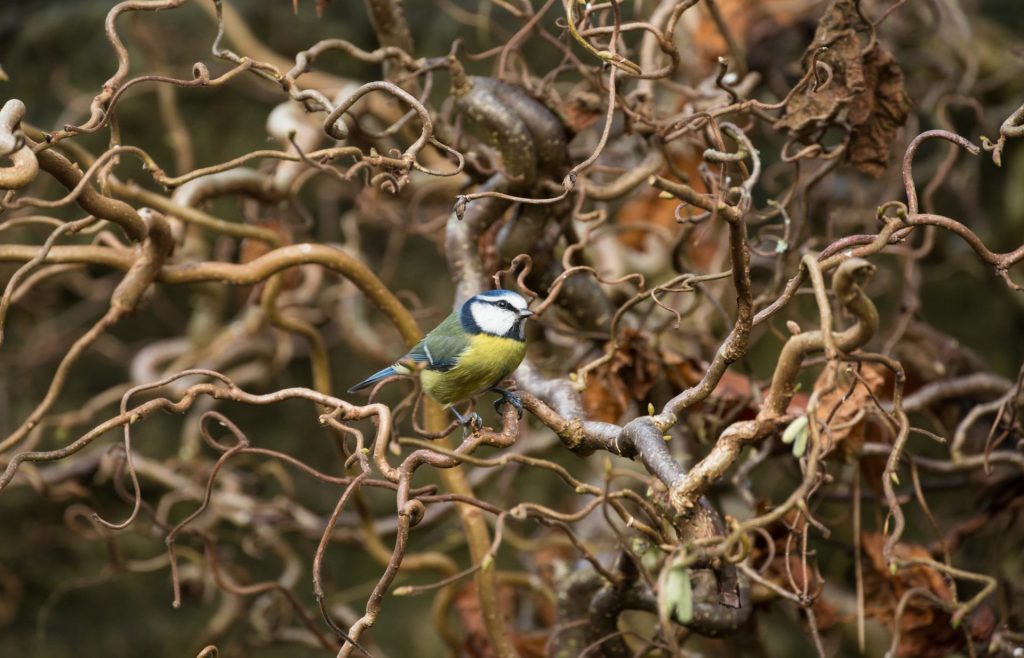
Tastefully Twisted
Most of the year, leaves and flowers may steal the show, but some plants look striking without them. Corkscrew hazel (also known as contorted filbert) and curly willow trees grow twisting branches that are easiest to see during winter when there’s no foliage to obscure them. Regular pruning will help encourage more pronounced curling along the branches.
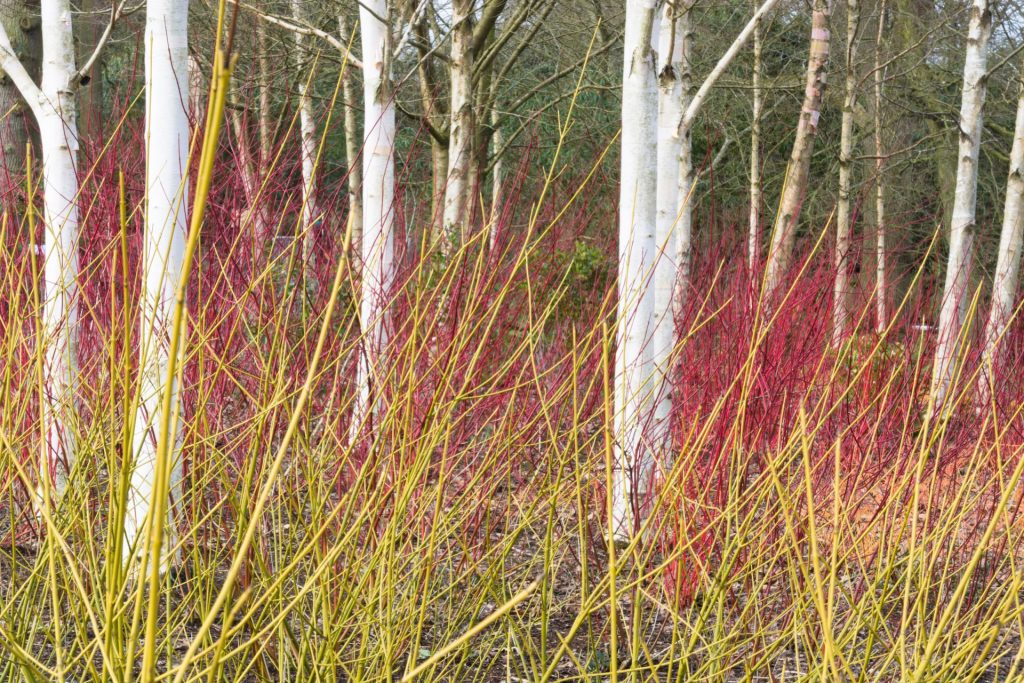
Beautiful Bark
Birch trees are winter favorites for their striking white bark, and ‘Coral Bark’ Japanese maples add pinkish-red splashes to the scenery. But the MVP for bright winter colors has to be the dogwood shrub with vivid branches that practically glow in reds, yellows and flame-like gradients. Be sure to cut back old stems in late winter or early spring, as the newer growth boasts brighter colors.
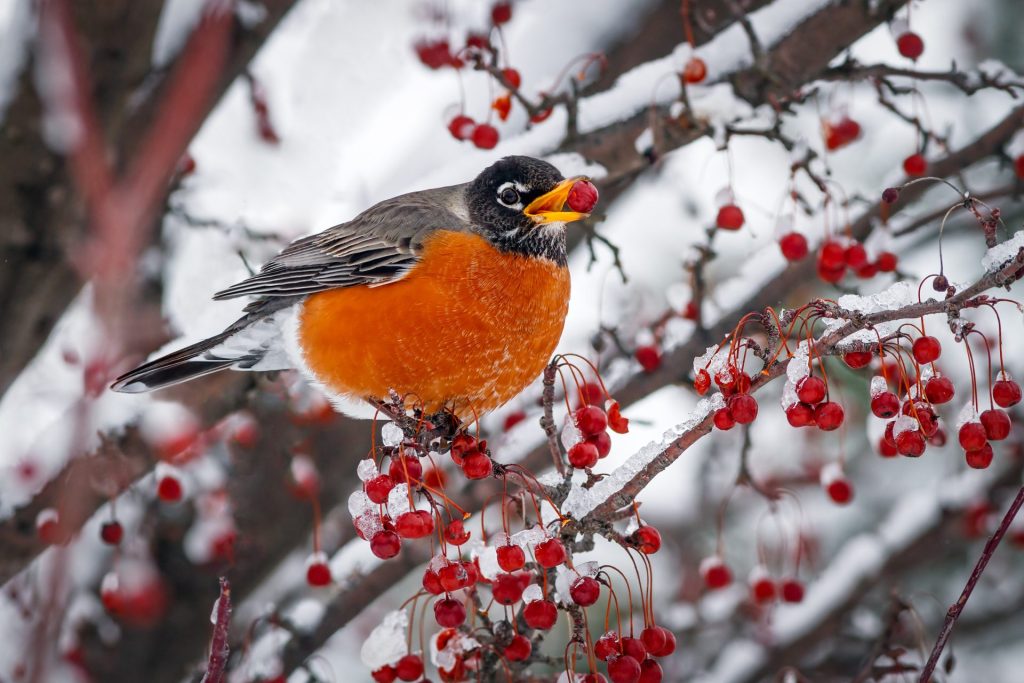
Fruit of the Gloom
You can’t find a more telling name than “winterberry” when searching for plants that bear fruit in winter. A variety of holly with deep red berries, winterberry is a classic holiday decoration that brightens up indoor and outdoor spaces alike. With another convenient name, “Winter Gold” is a variety of crabapple that retains its fruit in the winter, as do “Red Jewel” and “Sugar Tyme.” Juniper berries will also stick around well after fall, providing beauty and an important food source for wildlife.
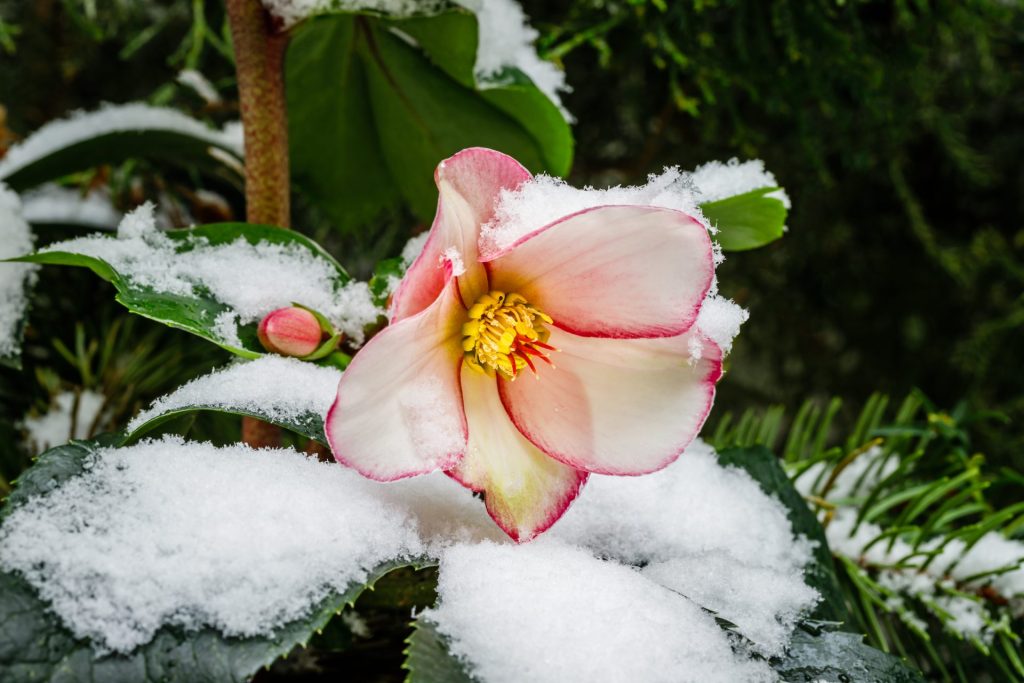
Early Risers
There’s not much hope for outdoor flowers in Colorado during the dead of winter, but late winter is a different story. Several flowers are known to pop up through the snow, and they’re always a sight for sore eyes. Some of our favorite late-winter flowers are glory-of-the-snow, snowdrops, crocus, winter heath and hellebore (Helleborus orientalis is also on Brawner’s list of plants with evergreen foliage).

Dried, But Not Forgotten
Sturdy stems with dried seed heads or calyces are great features in winter gardens. They add height and structure to beds, and some provide food for birds through the winter. Sea holly and globe thistles form dense, spiky seed heads, while lunaria is named for its shiny moon-like seed pods. The calyces of Chinese lanterns dry out and break down over winter, leaving behind delicate, lacey skeletons.
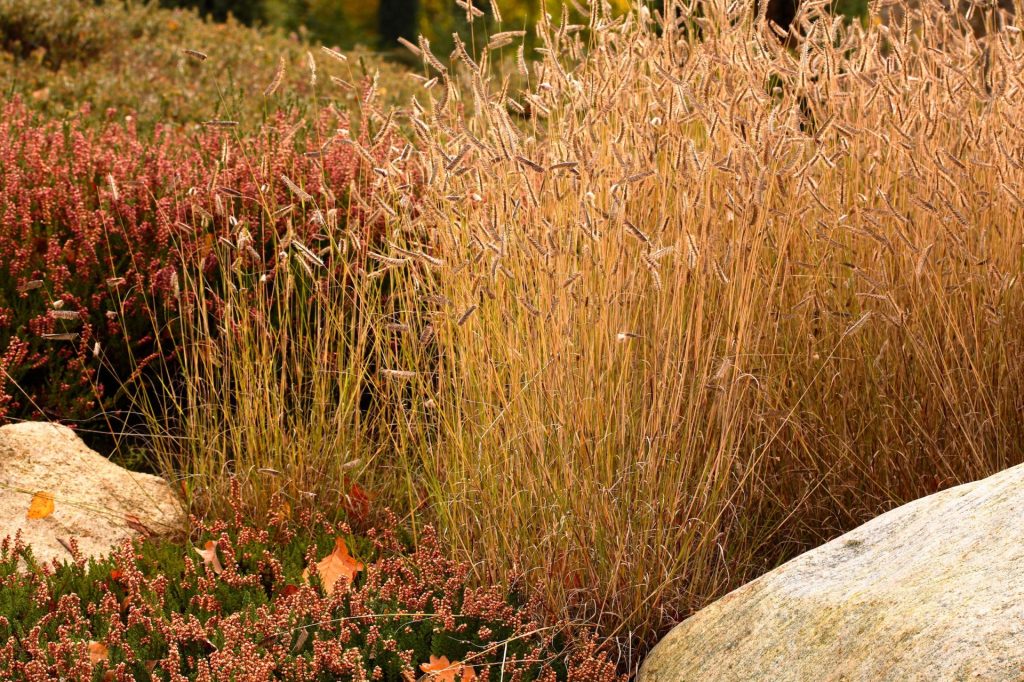
Meadow Magic
Grasses are invaluable additions to winter gardens, adding softness and texture to a scene usually limited to bare branches and frozen ground. For an exceptionally soft look, choose ruby muhly grass for its clouds of tiny red flowers in autumn that turn into gold, wispy seed heads in winter. By contrast, ‘Standing Ovation’ little bluestem has an upright growth habit with spikes of standing grass. ‘Blonde Ambition’ grama grass holds up oblong seed heads to float on the breeze.












